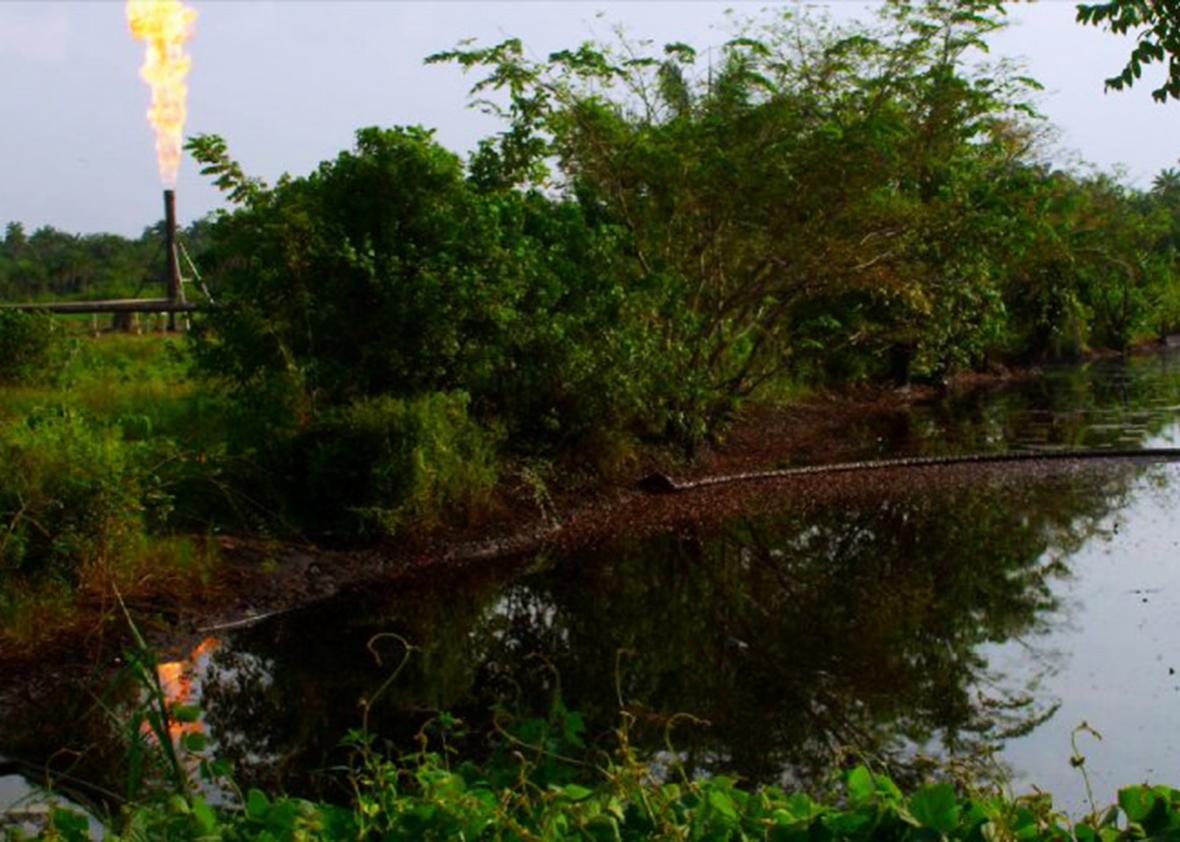Ten years after Al Gore’s slideshow-based thriller, An Inconvenient Truth, made climate change feel real to many, a new documentary hopes to pick up that mantle. It’s likely the most important climate change film of the year, which is now virtually certain to become our planet’s warmest year on record. Unfortunately, the film is a bit of a dud.
Time to Choose, which opens today, aims to examine tremendous recent advances in renewable energy while highlighting a world increasingly undermined by environmental destruction. It’s a topic worthy of more Hollywood attention: Basically, as Maddie Stone writes at Gizmodo, “Things Have Gotten Much Worse” since Gore’s momentous film.
Since An Inconvenient Truth premiered, global carbon emissions have risen by about 20 percent, atmospheric carbon dioxide is at a multimillion-year high, and—just this year—a massive die-off of the world’s coral reefs has kicked the ongoing global mass extinction up a notch or two on the expletive scale. Time to Choose comes at an especially important moment: Each of the past 12 months have been the most unusually warm ever measured, forcing scientists to invent new ways to display the data. (Yes, El Niño is here this year. No, that isn’t responsible for all of the warmth.)
But to hear the movie’s experts, a blissful solar-powered utopia is just around the corner. In fact, at times, the movie feels like a long infomercial for the renewable energy industry. Indeed, the film was partly financed by Tom Dinwoodie, co-founder of SunPower, a major solar company. (A similarly star-studded climate-themed miniseries documentary effort, Years of Living Dangerously, led by James Cameron, just got renewed for a second season on National Geographic; I think it handles this tension between realistic hope and soul-crushing despair a bit better.)
In Time to Choose, Academy Award-winning documentary filmmaker Charles Ferguson takes viewers on a tour of breathtaking places around the world that are being destroyed by Bad People. But take heart! Thanks to renewable energy, it’s now relatively easy to stop all that—all we have to do is choose, he says.
Most of the movie isn’t about climate change at all, but maybe that’s the point—climate change, after all, is really a symptom of the way the world is structured. Significant energy in the film is devoted to coal mining safety in China, political corruption in Nigeria, and the environmental implications of industrialized food production. (Michael Pollan makes an appearance.) While these concerns lie adjacent to the global warming problem, the film casts too wide of a net to be able to dive into the real reasons we’ve failed to address climate change.
In a world where many climate communicators, ahem, are still sometimes stuck in the doom and gloom, Time to Choose’s optimistic focus on solutions (and lots of pretty scenes of nature) is a little refreshing. At one point, Paul Polman, the CEO of Unilever and a frequent commentator on climate change, says, “It’s too late to be a pessimist.” But I had to roll my eyes at points—like when, the film’s narrator, Oscar Isaac, says “the world would be a much better place if we didn’t need oil anymore.” Well, duh. But that’s a pretty big if.
For all the tremendous growth in renewable energy, it’s just keeping pace with the still quickly expanding fossil fuel industry. The world derives about 13 percent of its total energy from renewable sources (the vast majority of that from hydropower and nuclear, neither of which are growing very quickly), a share that hasn’t changed since the late 1990s. Time to Choose repeatedly emphasizes that momentum is quickly shifting in favor of renewables. Problem is, in order to meet our climate targets, that 13 percent will have to grow to something like 50 or 60 percent in the next 35 years—a tremendously fast timeline especially when you remember we’ve actually made the problem much worse over the last decade or two. I came away from Time to Choose even more pessimistic than when I went in. Which is saying a lot for me.
If we’ve learned anything over the past decades of climate change communication, it’s that simply having solutions available is not enough to solve the problem. Climate change is the cruelest challenge we’ve ever faced as a civilization, because the incentives for quick action are almost totally absent. What Time to Choose misses is the chance to move beyond Al Gore’s trope of the climate crisis as both danger and opportunity. We’ve seen glimmers of a new way of talking about climate change over the past year or so, with figures from Pope Francis and Barack Obama to a group of kids in Oregon treating it more as a human rights issue than a technocratic problem of energy efficiency and failure to swap out the right type of light bulbs. Time to Choose frequently flirts with this, but then in the end brings climate action back to a matter of saving money and test-driving Teslas.
So, Hollywood: Keep making films about climate change, but please make them better than this one.
